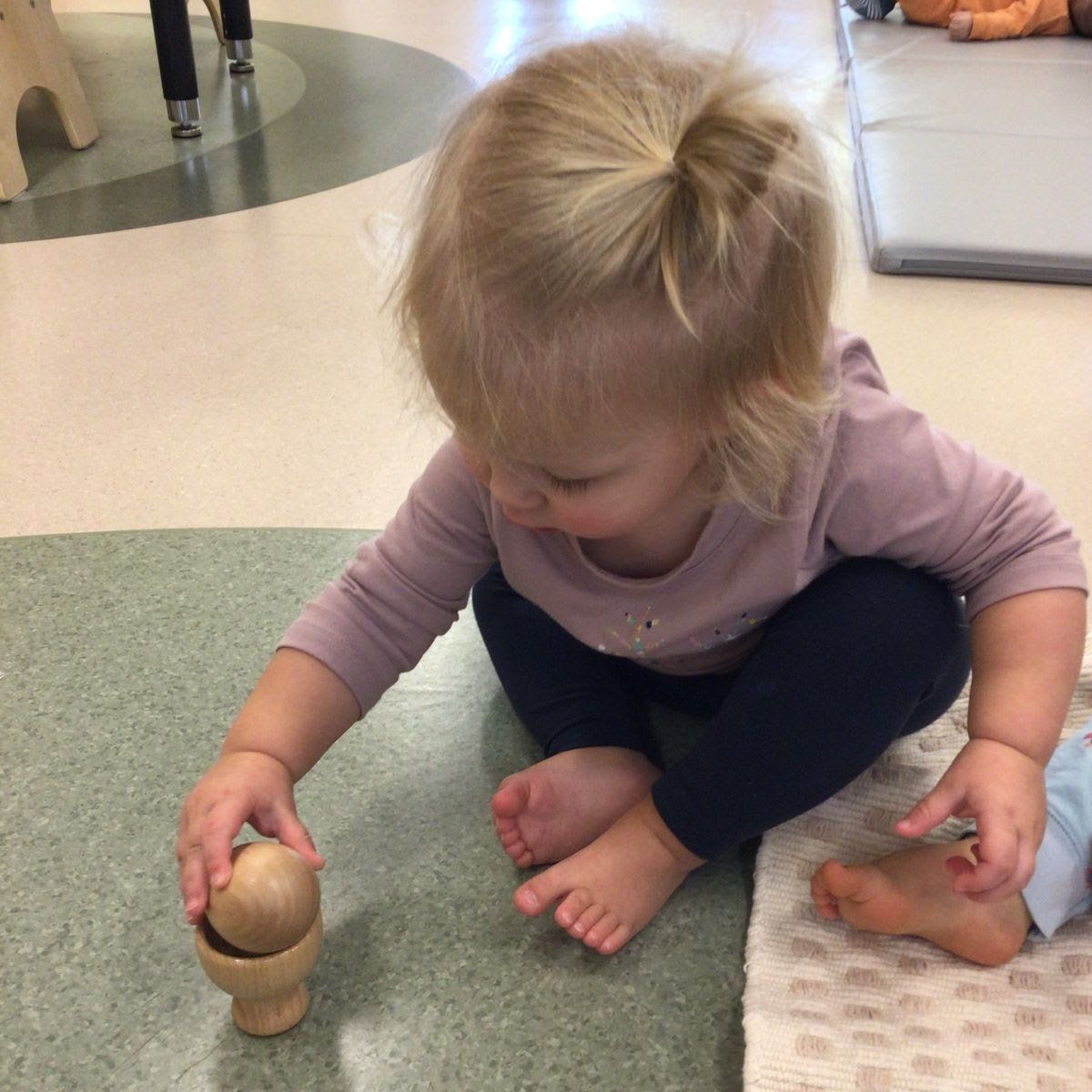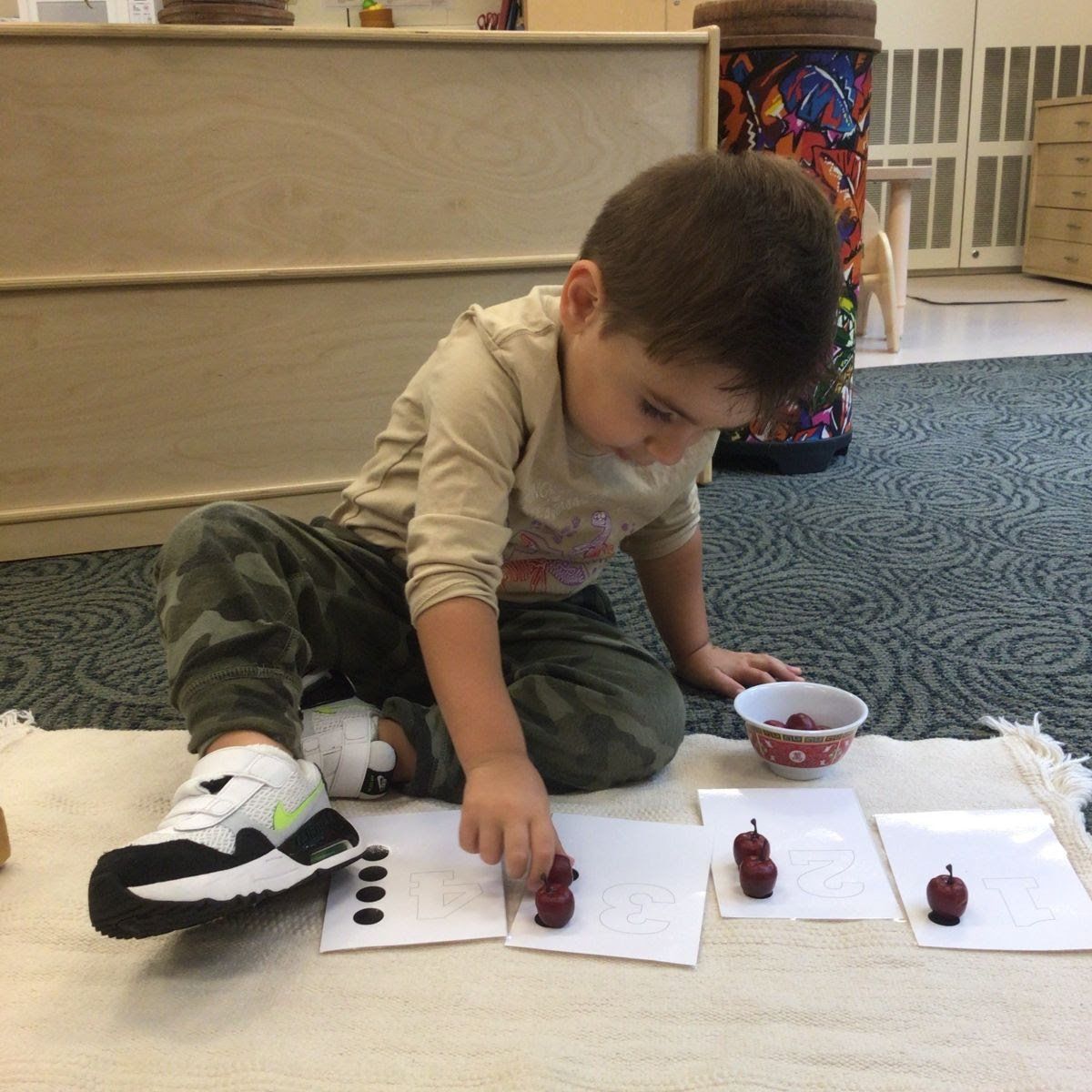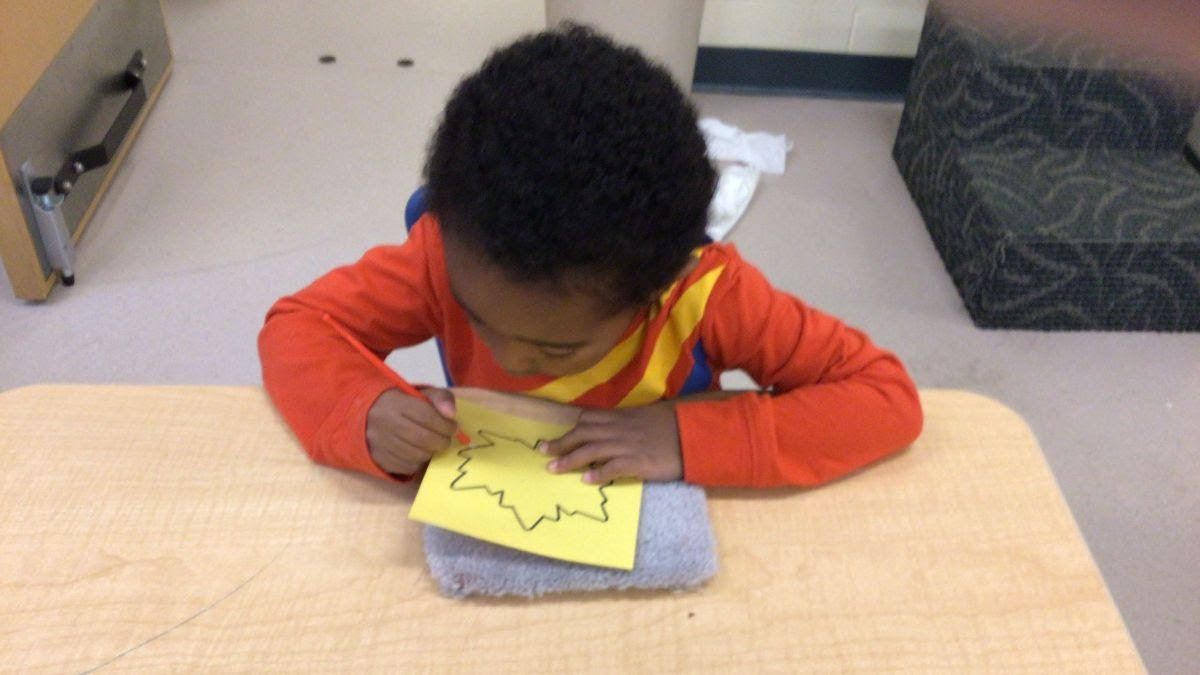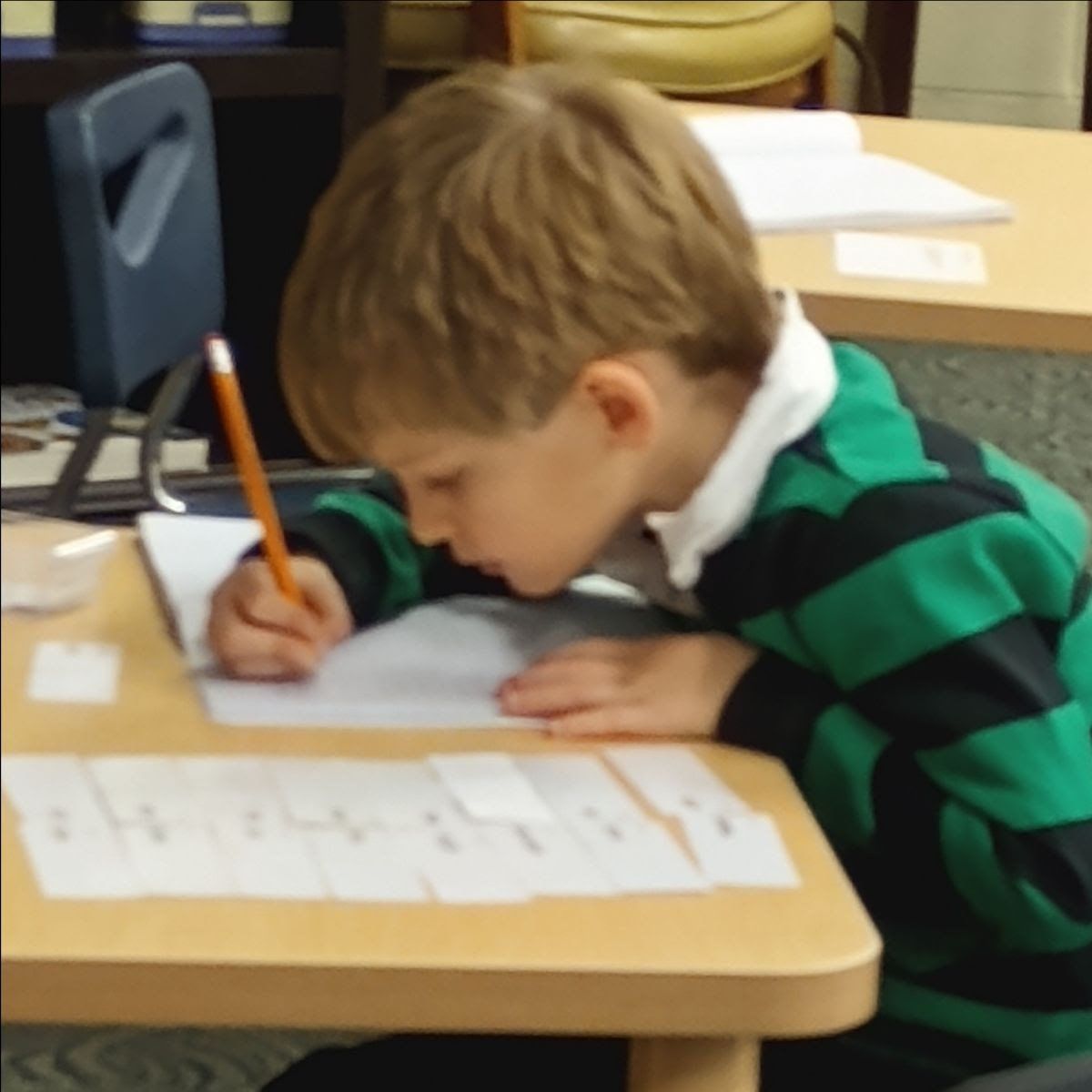December 2022
Happy December, MCOL families!
As we bring the spirit of the Thanksgiving holidays to a close and begin to usher in the wonder of Christmas, I wanted to share a few of the things our team feels grateful for at this time of the year –
- Our team's expressions of gratitude must begin with each of you believing in our Felician-Sponsored ministry, aka Montessori Center of Our Lady, and choosing us to start your child's educational journey. For that, we extend heartfelt gratitude.
- We would not exist without the Felician Sisters' dedication, commitment, and desire to bring a Catholic Montessori school to Livonia.
- For three years, we have added new programs to the changing needs you have expressed. We have introduced our Nido (infant), Young Children's Community (toddlers), and our Elementary (first thru sixth grade) programs to a campus that previously served children ages three thru kindergarten exclusively. We are grateful for the opportunity to honor the Felician Sisters Core Value of Transformation as we bring the programs to our MCOL community that you need to make your professional and personal lives work.
- We are grateful to have come through the pandemic without having to close our center permanently, as happened to so many other centers, and keep our operating hours intact to the best of our ability.
- Lastly, but of equal importance, we are grateful for us and our work as a team, learning and growing together and individually. Our newest team members are enthusiastic contributors to all we do with our students. Our returning MCOL team members light the path that allows us to do our best for the children we serve as we combine our team member's many talents on behalf of the children we serve.
Let’s take a look at the adaptation and refinement processes of the ages we serve (infants through sixth grade). We begin with a look at our Nido program.

Nido
Dr. Montessori said of the Nido child, "It follows that at the beginning of his life the infant can accomplish wonders – without effort and quite unconsciously." (The Absorbent Mind, p. 54)
Why do we refer to our infant program as Nido? Dr. Montessori chose the word, Nido, because it translates from her native language of Italian to meaning “nest” in English. Our Nido environment wasn’t thrown together on a whim. Rather, and as typical for authentic Montessori environments, we spent months designing the space and just as long carefully selecting the layout, furniture, and materials to ensure the environment would allow our infant community to feel secure so they can thrive.
Our Nido environment has a “nest” like feel for our Nido students. Our Nido environment (indoors and outdoors) is peaceful, a loving place where babies can explore and feel secure. Teachers speak in gentle tones, the daily pace is unhurried, and the classroom décor is understated with a homelike feel. We pride ourselves in knowing each child in our care is a unique individual to be nurtured with affection and the utmost respect.
Our Nido environment has developmentally appropriate material and activities that support the child through each stage of infant growth. Because we “follow the child,” we provide a variety of materials and spaces where infants can explore based upon their curiosity and mobility, not just their age.
You see in the photograph above an infant working with the Montessori “egg and cup.” It is a great material for the child’s whole-hand grip, their budding interested in putting things in and taking things out, as well as an opportunity to introduce a geometric solid shape.
This material allows for exploration along with slow and deliberate movements all while the infant builds their concentration! Simplicity at its best!

Young Children's Community
Of the toddler student, Dr. Montessori said,
"It begins with a knowledge of his surroundings. How does the child assimilate his environment? He does it solely in virtue of one of those characteristics that we now know him to have. This is an intense and specialized sensitiveness in consequence of which the things about him awaken so much interest and so much enthusiasm that they become incorporated in his very existence. The child absorbs these impressions not with his mind but with his life itself."
(The Absorbent Mind, p. 22)
One of the many things that an authentic Montessori education does very well is the continuum created from one program to the next is always scaffolding from the concrete to the abstract in all we present and do. That continuum Dr. Montessori created has everything to do with the child in the environment, not the adult. Whereas the Nido student is amazed when they place the egg in the cup, the toddler student refines that movement further as seen in the photograph above. Their wonder comes from placing something ever so small onto or into something else that is ever so small. The Young Children’s Community student also explores and slowly moves toward precise placement as they continue using slow and deliberate movements without interruption, thus extending their concentration.
The Young Children’s Community is carefully prepared to foster the toddler’s functional independence, cognitive and language development, speech, and strengthen their gross and fine motor skills. The environment and curriculum fosters movement and introduces grace and courtesy lessons that promote focus and concentration. An important part of a toddler’s developing independence is learning to care for him/herself…all of which begins in Nido and moves into the Young Children’s Community.

Children's House
Of the Children’s House student, ages three thru kindergarten, Dr. Montessori said,
"The little child’s first movements were instinctive. Now, he acts consciously and voluntarily, and with this comes an awakening of his spirit…. Conscious will is a power which develops with use and activity. We must aim at cultivating the will…. Its development is a slow process that evolves through a continuous activity in relationship with the environment."
(The Absorbent Mind, p. 231)
And so, the scaffolding work of the child in Nido and the Young Children’s Community continues in Children’s House with further refinement in all areas necessary for the child’s potentialities to surface without obstructions (deviations) – order, gross and fine motor coordination, extending concentration, and functional independence. Ever working toward that end, it is why we “never help a child with a task at which he feels he can succeed.” Dr. Montessori warned that when we free the child's potential, we transform him into the world. We saw in Nido and the Young Children’s Community the refinement of movement achieved first with the egg and cup and then with small apple objects onto small circles. In the photograph above, we see a child using a elongated push pin and making hold on the border of a leaf shape. The result being the child has made enough holes on the leaf’s border to push the leaf away from the paper frame. Quite a feat that requires a child’s ability to persevere the challenge and put in the repetition to accomplish the goal!
Elementary begins the child’s journey into what Dr. Montessori called the Second Plane of Development (ages six thru 12). Dr. Montessori said, "Knowledge can be best given where there is eagerness to learn, so this is the period when the seed of everything can be sown, the child’s mind being like a fertile field, ready to receive what will germinate into culture. But if neglected during this period, or frustrated in its vital needs, the mind of the child becomes artificially dulled, henceforth to resist imparted knowledge. Interest will no longer be there if the seed be sown too late, but at six years of age all items of culture are received enthusiastically, and later these seeds will expand and grow." (To Educate the Human Potential, p. 3)
To give you an idea of a typical week in our Elementary program and how the quote above applies, I chose to use one of Mr. Tom’s weekly updates to his elementary families. Mr. Tom’s words follow-
“In my communication to you last week, I alluded to the ongoing work we do to understand the passage of time (on a geologic scale) with the
Timeline of Life. To help students gain a firmer grasp on how
history
is subdivided into different time spans, we did a lesson called "The Year and Its Parts." The lesson illustrates how we divide our year into shorter periods: ½ a year = 6 months = a semester, ⅓ of a year = 4 months = trimester, etc. We can further divide months into weeks, weeks into days, days into hours and so on.
Our creation of daily timelines, timelines of our own life histories, and the activity mentioned above that divides time our students are able to relate to, have helped to lay a foundation for what will follow on a grand scale. We will begin to discuss longer spans of time in history i.e.: Eons, Eras, and Periods. Changes in the Earth's atmosphere, temperature, and its composition have affected the development of life on our planet (and the occasional extinction of it). With these discussions, we hope to spark interest and wonder about the fragility of life, but on a deeper level we aim to inspire our students to become stewards of our environment.
To that end, we are engaged in activities at school to help
care for our Earth. As a ministry of the Felician Sisters, we are trying to reduce wastefulness whenever possible; we are recycling materials that can be reused or re-purposed, and we are composting biodegradable materials in the garden bed behind our classroom. The elementary students will help to collect and sort through these materials in our efforts to become more environmentally conscious.
Continuing our studies of
North America, we are looking at flags of the countries and associating the capital cities of each. I hope students will begin to do some basic research about various places as we also strive to develop an appreciation for multiculturalism in our society. Here again, we are laying groundwork for lessons to follow in the future
(Needs of Humans).
In
language, we looked at antonyms (opposites) this week. We also did an art integration activity where we examined Mother and Child paintings across various time periods. Using Socratic questioning techniques, I encouraged students to compare, contrast and develop some critical thinking skills as they attempted to interpret the works of art.
We will integrate botany and zoology as we examine the
Timeline of Life to see how plants and animals adapted to the changing conditions on Earth.
Children were introduced this week to the Montessori Bells. This material trains students to distinguish whole pitches in the scale of C. They begin by arranging notes from low to high, try to match the pitches with their voices, and will learn how these notes are symbolized in music notation.”
In conclusion, our goal for this edition of News and Notes is to show the scaffolding that exists from one program to another. Nothing is random in this carefully curated methodology for children. For example, the pink tower (see image) material used in Children’s House to refine their understanding of the terms largest/smallest and introduce the geometric solid shape of a cube becomes area volume work in Elementary. The child’s functional independence begins in Nido and continues throughout the elementary years. Dr. Montessori saw the potential in each child and wanted to create a means of instruction that allowed them to have a concrete understanding before being rushed into memorization of things they do not yet understand.
Until next time,
Laura


Christmas Sing-Along
Children's House and Elementary parents are invited to join us at 11:30 am on December 23 for our Christmas Sing-Along* for the Felician Sisters! We will provide programs with our students' favorite Christmas songs so you can sing with us. We will be singing outside the Convent, so dress for the weather if you attend. Currently, visitors may not enter the Convent. After our Sing-Along, you and your child can pick up a small treat from us here at MCOL and head home for the Holidays! If you are unable to attend, your CH or EL child will attend with their classroom. Noon dismissal for all programs. Follow the link below to RSVP if you are interested: https://www.signupgenius.com/go/10C0C4EA4A723ABF9C16-christmas1
*This event is weather dependent. MCOL will notify families by email and Remind text message if the event is cancelled.
Mission Moments
Take a moment to read our December Mission Moments, courtesy of our Mission Director Miss Gail, by pressing the Mission Moments button below.

Hi, my name is Ms. Katie and I own DownPup Yoga! I am your child’s Yoga instructor every Wednesday at MCOL. Since we began in October, I have introduced the routine of "Breathe, Move, Rest" as the overall structure for each yoga class, and children practiced each of these elements in each Enrichment class. They learned how deep and slow breaths can help calm their body and mind when they are feeling upset, angry, sad, or even overexcited! Students have learned and practiced many poses- some with a focus on stretching like butterfly and ragdoll; others to work on balance such as tree and warrior; others help with groundedness and calm such as downward dog and mountain. Each class ends with a short relaxation (our "yoga rest") where children lay down and practice taking a break and breathing peacefully; they have gotten much more comfortable with this over time! It's been beautiful to see them learn and settle into the practice of breathing, moving, and resting.
Important Dates
- Half-Day Noon Dismissal- December 23
- Christmas Break - December 24 through January 8
- MLK Day (No School) - January 16
- Bring Your Parent to School Night: Children's House and Elementary- January 24
- Bring Your Parent to School Day: Nido and Young Children's Community- January 28
- Catholic School Week: More details to come!- January 29 through February 4
- Professional Development (No School)- February 17
- Midwinter Break- February 20


